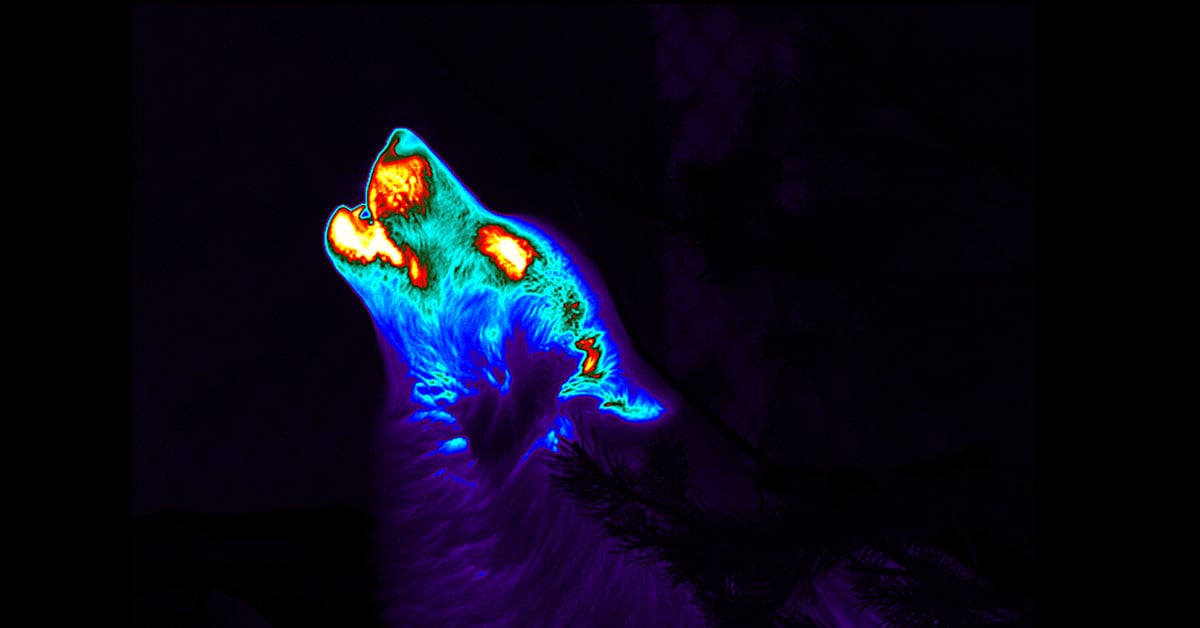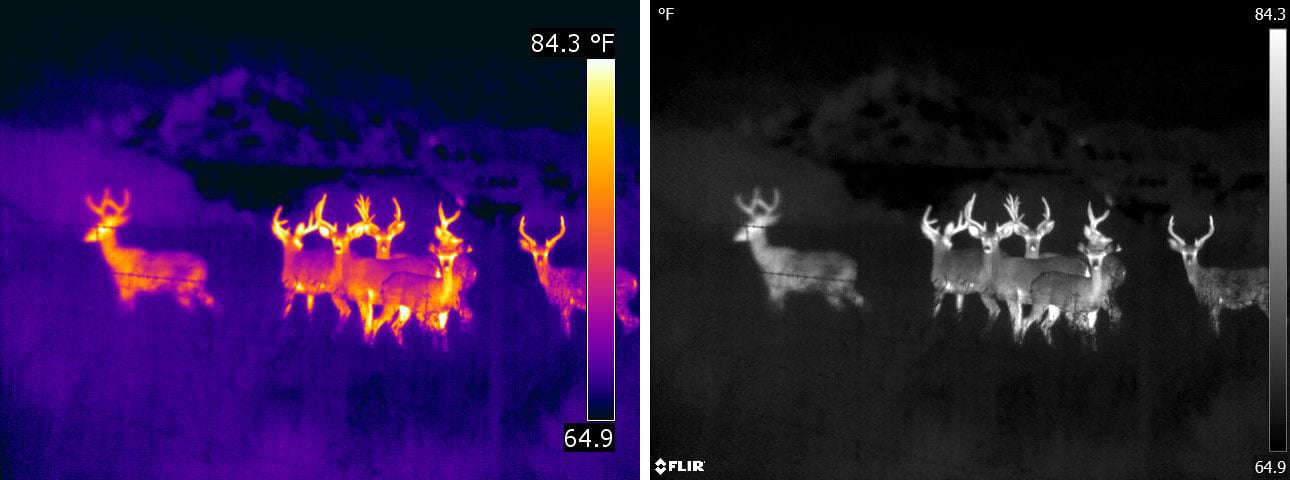How Does A Infrared Camera Work
How Practise Thermal Cameras Work?

A thermal photographic camera is a non-contact device that detects infrared free energy (heat) and converts it into a visual image. Let'south dive into the science of thermal cameras and the invisible earth of estrus they allow u.s. to encounter.

How do thermal cameras work?
Detecting Infrared Waves, Not Visible Calorie-free
The commencement affair to know about thermal cameras is they don't work like regular cameras. Regular daylight cameras and the human eye both work on the same bones principle: visible low-cal energy hits something, bounces off it, a detector receives the reflected lite, then turns it into an prototype.
Thermal imagers make pictures from heat, not visible calorie-free. Heat (besides called infrared or thermal energy) and light are both parts of the electromagnetic spectrum, simply a camera that can detect visible low-cal won't run across thermal energy, and vice versa. Thermal cameras capture infrared energy and use the data to create images through digital or analog video outputs.

Craig Beals explains the electromagnetic spectrum on Invisible Labs.
Inside the Camera
A thermal photographic camera is made upward of a lens, a thermal sensor, processing electronics, and a mechanical housing. The lens focuses infrared free energy onto the sensor. The sensor tin come in a diverseness of pixel configurations from 80 × 60 to 1280 × 1024 pixels or more. This is the resolution of the camera.
These resolutions are depression in comparison to visible lite imagers because thermal detectors need to sense energy that has much larger wavelengths than visible calorie-free, requiring each sensor chemical element to be significantly larger. As a result, a thermal camera usually has much lower resolution (fewer pixels) than visible sensors of the same mechanical size.
- Important specifications to consider when choosing a thermal camera include resolution, range, field of view, focus, thermal sensitivity, and spectral range. Click to learn more.
What Are Thermal Cameras Able to Detect?
Heat sensed past an infrared photographic camera can exist very precisely measured, allowing for a large variety of applications. A FLIR thermal camera can detect tiny differences in rut—as pocket-size as 0.01°C—and display them equally shades of grayness or with different colour palettes.

The aforementioned image with heat differences displayed in the ironbow and white hot palettes.
Everything we come across in our day-to-mean solar day lives gives off thermal energy—even ice. The hotter something is the more thermal energy it emits. This emitted thermal energy is called a "heat signature." When 2 objects next to i another have fifty-fifty subtly different oestrus signatures, they prove upwardly quite clearly to a thermal sensor regardless of lighting conditions. This allows thermal cameras to see in complete darkness or smoke-filled environments.
- Thermal cameras tin can see many things our eyes or regular cameras can't see, but can be blocked by some surprising materials. Click to acquire more.
What Are Thermal Cameras Used For?

Thermal imaging and night vision technology is often confused, simply each have their own unique features and strengths.
The potential uses for thermal cameras are nearly limitless. Originally developed for surveillance and war machine operations, thermal cameras are now widely used for building inspections (moisture, insulation, covering, etc.), firefighting, autonomous vehicles and automated braking, skin temperature screening, industrial inspections, scientific enquiry, and much more.
How would you employ a thermal camera? Comment below to let u.s.a. know!
Source: https://www.flir.eu/discover/rd-science/how-do-thermal-cameras-work/
Posted by: yusomearesove.blogspot.com

0 Response to "How Does A Infrared Camera Work"
Post a Comment